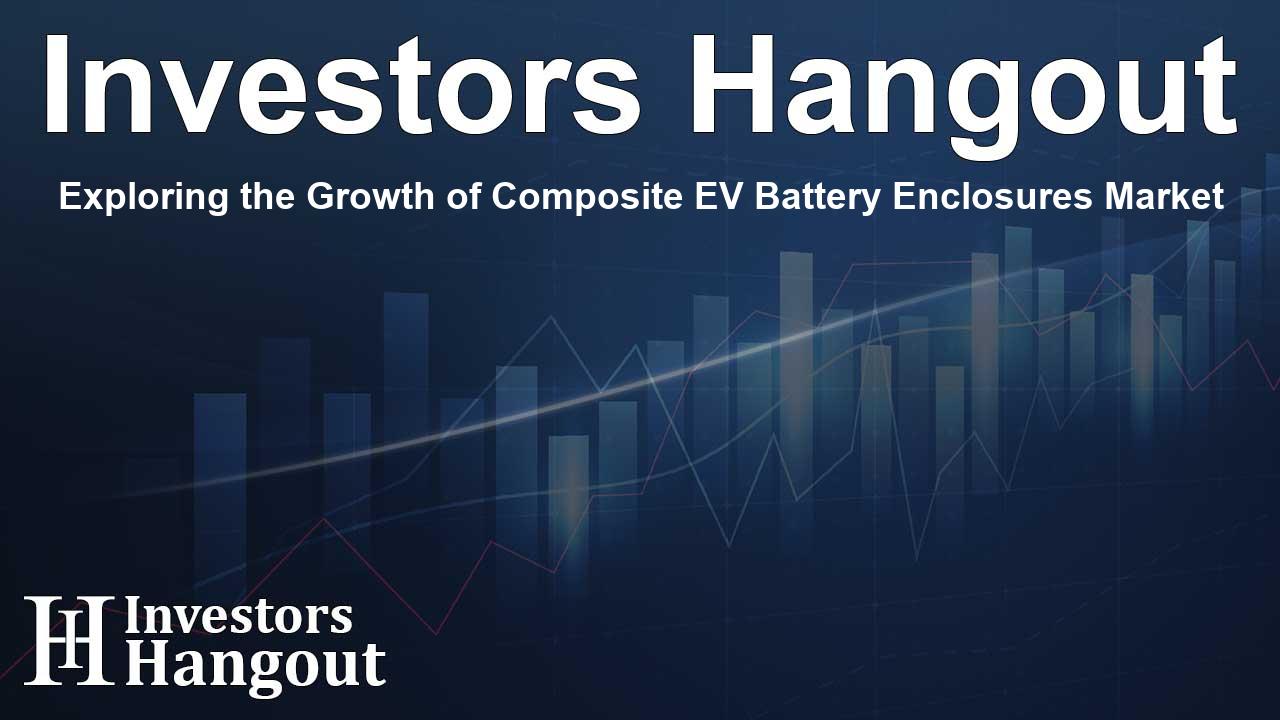Exploring the Growth of Composite EV Battery Enclosures Market

Understanding the Composite EV Battery Enclosures Market
The global landscape of composite battery enclosures for electric vehicles (EVs) is rapidly evolving. As industries pivot towards sustainable energy solutions, composite EV battery enclosures are forecasted to experience a remarkable growth trajectory. Recent studies indicate that this market is set to expand at an impressive annual rate, eventually reaching a substantial valuation by the end of the decade.
Market Growth Projections
According to recent analyses, the composite EV battery enclosures market is expected to witness a compound annual growth rate (CAGR) of 23.5% from now until 2030. This remarkable growth is fueled by various driving factors, including the increasing demand for more lightweight and durable car components, advancements in battery technology, and a global shift towards electric mobility.
Key Driving Forces
Several pivotal drivers contribute to this promising forecast. Firstly, the surge in electric vehicle adoption largely hinges on consumer awareness regarding environmental protection and sustainability. Additionally, governments worldwide are introducing substantial incentives aimed at promoting EV usage. These factors collectively augment the demand for efficient battery enclosures, further energizing market expansion.
Segment Analysis of the Market
The composite EV battery enclosures market is intricately segmented to assess various aspects of its growth. These segments include propulsion type, vehicle type, composite type, and even regional markets.
Propulsion Type Segmentation
In terms of propulsion, the market is categorized into battery electric vehicles (BEVs) and hybrid electric vehicles (HEVs). Forecast analyses consistently suggest that BEVs will dominate the sector owing to their eco-friendly advantages. With advancements in charging station infrastructure and decreasing vehicle costs, BEVs are not just the future of transportation; they represent a substantial market redefining traditional automotive designs.
Vehicle Type Impact
When examining vehicle types, the market reveals a distinct focus on passenger cars, commercial vehicles, and light duty cars. The passenger vehicle segment is anticipated to remain the largest, primarily driven by rising consumer awareness and government support towards EV adoption. The compelling need for efficient and reliable battery systems further bolsters this segment’s growth.
Regional Growth Insights
Geographically, the analysis showcases that specific regions are poised for the most dynamic growth in composite EV battery enclosures. Notably, the Chinese market is highlighted as a significant contributor, supported by a robust presence of original equipment manufacturers (OEMs) and an ever-increasing demand for electrified transportation. Major industry figures like BYD and SAIC lead this transformation.
Market Competitors and Their Strategies
The competitive landscape reveals a tightly knit market dominated by key players such as Continental Structural Plastics and SGL Carbon. These companies are heavily investing in technology advancements and the development of innovative products to maintain their industry standings. Strategic alliances and collaborations are also common, as they allow firms to leverage shared resources and insights to enhance manufacturing capabilities.
Benefits and Challenges in the Composite EV Enclosure Market
Composite materials provide several advantages in vehicle manufacturing, including lightweight characteristics and enhanced durability, which help improve vehicle performance and efficiency. However, challenges persist, such as material costs and production complexities that manufacturers must strategically navigate.
Frequently Asked Questions
What factors are driving the growth of the composite EV battery enclosures market?
The increasing adoption of electric vehicles, government incentives, and advancements in manufacturing technologies are major growth drivers.
How does the regional market structure look for composite EV battery enclosures?
Regions like China lead in market potential, followed by North America and Europe, driven by strong automotive industries and government regulations favoring electric vehicles.
What is the projected market size for composite EV battery enclosures by 2030?
The market is projected to reach approximately US$ 5.0 billion, with robust growth expected over the coming years.
Who are the main players in the composite EV battery enclosures market?
Key players include Continental Structural Plastics, STS Group AG, and SGL Carbon, which are investing in innovative technologies to stay competitive.
What are the challenges faced by manufacturers in this market?
Manufacturers face challenges such as high material costs and complex production processes that require careful management and innovation.
About The Author
Contact Logan Wright privately here. Or send an email with ATTN: Logan Wright as the subject to contact@investorshangout.com.
About Investors Hangout
Investors Hangout is a leading online stock forum for financial discussion and learning, offering a wide range of free tools and resources. It draws in traders of all levels, who exchange market knowledge, investigate trading tactics, and keep an eye on industry developments in real time. Featuring financial articles, stock message boards, quotes, charts, company profiles, and live news updates. Through cooperative learning and a wealth of informational resources, it helps users from novices creating their first portfolios to experts honing their techniques. Join Investors Hangout today: https://investorshangout.com/
The content of this article is based on factual, publicly available information and does not represent legal, financial, or investment advice. Investors Hangout does not offer financial advice, and the author is not a licensed financial advisor. Consult a qualified advisor before making any financial or investment decisions based on this article. This article should not be considered advice to purchase, sell, or hold any securities or other investments. If any of the material provided here is inaccurate, please contact us for corrections.
